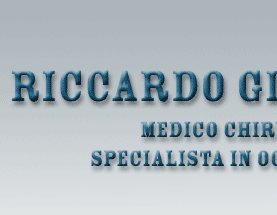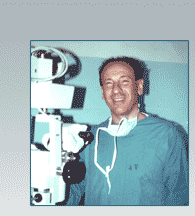 |
 |
 |
|
|
Primary posterior capsulorrhexis The risk of retinal detachment does not appear to increase, in this surgeon’s experience. By Riccardo Giannetti, MD Special to OCULAR SURGERY NEWS Posterior continuous curvilinear capsulorrhexis (PCCC) has been advocated by Gimbel in cases of posterior capsule rupture, in infants to prevent development of posterior capsular opacification and in cases of posterior capsule scar. In 1993 Galand began performing routine primary PCCC in adults with clear capsules to evaluate the risks and advantages of the procedure, with the aim of avoiding Nd:YAG laser capsulotomy and its complications and, above all, the long-term visual function decay that precedes it. In January 1994, I started performing PCCC, and by September of that year I was performing it in all cases. I designed a viscoelastic cannula specifically to accomplish the maneuver (Bausch & Lomb Surgical, Since then, I have performed more than 1724 cases of routine PCCC with few complications and encouraging results. Based on my data, I believe that primary PCCC performed in all cases is a usefull procedure for modern sutureless cataract surgery. Despite the lack of studies in the literature, except for Galand’s work (although Gimbel, Koch, Castaneda, Zetterstrom and others perform PCCC in infants or in the presence of scars on the posterior capsule), I trust in the primary PCCC methodology because of the advcantages I have noted during 4 years of follow-up study. Methods and procedure Between January 1994 and December 1998 I performed PCCC in 1724 cases of cataract extraction and IOL implantation. Patient age ranged from 23 to 92 years (average 67.4 years). My extracapsular cataract extraction (ECCE) surgical approach of choice has always been the manual nucleus capture (MNC) technique. During an early period I avoided performing PCCC in monocular patients, in myopic eyes with axial length grater than Based on my data, PCCC is a mandatory procedure to systematically avoid postoperative Nd:YAG laser and its complications. With the Technique In all cases I employed my phacoless no-stitch MNC technique. This is not nucleus fragmentation, it is nucleus reduction, accomplished with “capture” of the inner nucleus with special instruments (Baush & Lomb Surgical; Janach) through a sutureless tunnel positioned for astigmatic control (see nomogram in table at right). Two patients required general anesthesia. Local anesthesia by mixed peribulbar/retrobulbar injection was used in 983 cases and, since January 1997, topical anesthesia was used routinely in 739 cases. After a cleanup of the bag, it is important to substitute the usual 27-gauge cannula for viscoelastic with the posterior capsulorrhexis cannula (34 gauge, 0.2-mm tip with 90° angle of injection, Baush & Lomb Surgical; Janach; and Katena ( First I spread more viscoelastic in the periphery of the bag, leaving a relief area in the central part of the posterior capsule corresponding to Berger’s space. It is always preferable to avoid excessive filling of the bag, because overfilling makes PCCC a more difficult procedure, and extension of the PCCC into the capsular fornix more frequent. The PCCC cannula prevents injection of air bubbles along with the viscoelastic into Berger’s space behind the posterior capsule. Capsule perforation With a common straight 30-gauge insulin needle, I softly perforate the posterior capsule, as centrally as possible, in front of Berger’s retrolental space. In early cases, doing this the wrong way, I performed this maneuver in proximal traction, with the needle bent (as was the common procedure in the old-styled cystotome ECCE). I soon realized that in this manner I could not directly control the placement of the needle edge, and as a consequence had 35% perforation of the anterior hyaloid and increased vitreous prolapse. The thinnest viscoelastic (air) 30-gauge cannula was found to be toocoarse for this procedure, increasing the risk of a posterior capsular tear during viscoelastic filling of Berger’s space. So I designed the PCCC viscoelastic cannula to master this critical maneuver. The PCCC cannula can more easily fill Berger’s space, with an intact posterior capsule, avoiding possible complications. With the straight 30-gauge insulin needle in pushing mode, it is possible to monitor the entrance into Berger’s space by observing posterior capsule wrinkles purposely induced by the needle tip. In this way, there is full control with no traumatic needle penetration into Berger’s space. Penetration of the anterior hyaloid is avoided. With the PCCC cannula I fill Berger’s space with viscoelastic. I then perform PCCC with a 3- At this point, the vitreous is always intact and the anterior hyaloid is pushed further back behind Berger’s space by the viscoelastic. IOL insertion Now the capsuilar bag, with coaxial capsulorrhexis, is ready to receive IOL implantation. Despite the presence of the PCCC, because of the space-maintaining property of the viscoelastic, it is regularly possible to implant any type of in-the-bag IOL, including foldable ones. Attention must be taken to avoid PCCC haptic or optic capture during the insertion-rotation maneuver. When using my nomogram for astigmatic control, tunnels smaller than To ensure implantation in the capsular bag in all cases, the procedure can be enhanced by using the Giannetti Pull-Pusher to guide the IOL’s proximal loop into the bag with a simple 90° rotation of the instrument, which allows you to avoid touching any surrounding tissue. Viscoelastic removal, directly from the anterior chamber and indirectly from Berger’s space, is quite easy, and one can usually do this the same as if PCCC has not been done. Self-sealing of the tunnel incision is tested by inflating the anterior chamber with balanced salt solution. As intraocular pressure (IOP) reaches the normal range, pressure within the eye will work to close the wound. Since late Results In 1724 cases, I have noticed vitreous prolapse into the anterior chamber in only 27 eyes, 16 of them due to PCCC zonular “flight”. In the remaining 11, anterior vitreous prolapses through the PCCC despite its integrity. In seven cases, the presence of vitreous in the anterior chamber increased in the postop period. (See “Pluses and minuses” table below). In these 27 cases, positive vitreous pressure was observed before PCCC was performed. The situation could be controlled only with the use of a high viscosity viscoelastic. Visual acuity was measured in 50 cases of MNC with PCCC and compared to 50 cases of phacoemulsification without PCCC, 2 weeks following the surgery. In the PCCC group, more than 95% of patients had a visual acuity of 0.5 or better, while in the no-PCCC group this figure was 82%. The difference between the two groups in terms of loss of visual acuity increases as time passes. In the no-PCCC group, we can observe the well-known progressive decay of visual function that always precedes Nd:YAG laser capsulotomy, as reported in definitive longterm studies. In a 1994 follow-up study of 40 cases performed with MNC with PCCC, versus 40 cases performed with phacoemulsification without PCCC, I observed that median endothelial cell density at 1 month following surgery, cystoid macular edema and IOP at 2 weeks postop were the same for the two groups. In all 1724 cases of MNC with PCCC, with mean follow-up time of 1 year and 10 months, the incidence of retinal detachment is extremely low: only two cases occurred, both in myopic eyes with axial length of greater than Concerning viscoelastic, the MNC with PCCC procedure needs no more than a single dose. Except for the learning curve period, a single vial is sufficient for the entire operation, including the PCCC portion. Undoubtedly, the high viscosity and quality of the viscoelastic greatly enhances the maneuvers. Mastering PCCC Mastering PCCC can bring valuable advantages to the surgeon. Apart from absolute transparency of the patient’s visual axis, other advantages stem from the elimination of postop Nd:YAG laser use and its well-known complications, with special concern about the 1% to 4% reported incidence of retinal detachment. (The rate of postop posterior capsular opacification is probably heavily undervalued because many patients avoid doing regular postop controls, resigned to their partially restored visual functions). In the 1724 cases in the follow-up study of MNC with PCCC, I observed a very low incidence of postop retinal detachment (two cases), both in myopic eyes with axial length longer than This confirms that the PCCC procedure does not contribute to vitreo-retinal complications. Nd:YAG is useful Surprisingly, Nd:YAG laser has been useful in gour cases, despite the presence of the PCCC, because epithelial cell growth into the visual axis took place, over the surface of the anterior hyaloid. These four cases were all in highly myopic subject between the ages of 25 and 42 years who underwent MNC with PCCC clear lensectomy. However, the Nd:YAG laser procedures in these cases were extremely simple because the proliferation of cells over the anterior hyaloid was not supported by the posterior capsule. So the “membranectomy” could be performed with very low energy from the Nd:YAG laser, a mean of 12 to 16 spots at 0.8 mJ. Although they are low, the risks of vitreous prolapse or zonular flight increase if PCCC is performed with a diameter larger than Conclusion This long-term study agrees with Galand’s findings: “the risk of retinal detachment does not appear to increase after posterior capsulorrhexis.” It is my firm belief that we have found a definitive, and therefore mandatory, solution to secondary cataract: primary intraoperative PCCC in all cases. The long-term excellent stability of the clear visual axis obtained with the PCCC procedure eliminates definitively the constant visual decay commonly observed in the past due to opacification of the central posterior capsule. Pluses and minuses Advantages and disadvantages of the PCCC procedure with 4 years follow-up experience (1,724 cases)
Advantages -Definitive visual axis with maintenance of absolute transparency -Increased and steady improvement of visual acuity -Increased and steady improvement of chromatic and luminous sense -No need for postop Nd:YAG laser: No Nd:YAG laser inducedc IOL damage No Nd:YAG laser induced retinal detachment (1% to 4% in published reports) No Nd:YAG laser induced CME -Great patient satisfaction reported subjectively -No increased risk of postop retinal detachment -No increased rate of CME -Intraocular pressure and endothelial cell density unmodified Disadvantages -0.9% increased risk of vitreous prolapse -Somewhat difficult surgical maneuver -Perfect binocular vision and stereopsis for the surgeon is mandatory -procedure to be done at maximum microscope magnification, with a top quality operating micro- Scope -Steep learning curve -Need for PCCC cannula to enhance the procedure -Need for top quality capsulorrhexis forceps (Corydon or equivalent) -Need for high viscosity viscoelastics for safety Source: For Your Information: -References: Galand A. Posterior capsulorrhexis in uncomplicated adult eyes. OCULAR SURGERY NEWS InternationalEdition, 1993:28. Galand A. Posterior capsulorrhexis in adult eyes with intact and clear capsules. J Ctaract Refract Surg. 1996:22. Giannetti R. Nucleuscapture, a safe inexpensive optino for small incision cataract surgery. OCULAR SURGERY NEWS International Edition 1996:1:14-15. Giannetti R. Phacoless nucleuscapture through a planned location no-stitch tunnel OCULAR SURGERY NEWS. 1996:1:38-39. Gimbel HV. Posterior capsulorrhexis with optic capture, maintaining a clear visual axis after pediatric cataract surgery. J. Cataract Refract Surg. 1994:20:658-664. Gimbel HV. Continuous circular, two-staged and posterior continuous circular capsulorrhexis. Ophthalmic Pract. 1990:8(2):81-85. Gimbel HV. Posterior capsule tears using phacoemulsification causes, prfevention and management. Eur J implant Refract Surg. 1990:2:63-69. Van Westenbrugge JA, Gimbel HV, Souchek J, Chown D. Incidence of retinal detachment following Nd:YAG capsulotomy after cataract surgery. J Cataract Refract Surg. 1992:7(18):352-355. (da Ocular Surgery News International Edition. Vol.10, no. 11-November 1999)
|
||
|
Studio: Viale Carducci 86/a - 57124 Livorno - PI 00656480498 - tel 0586405924 - fax 05861945075 |
||